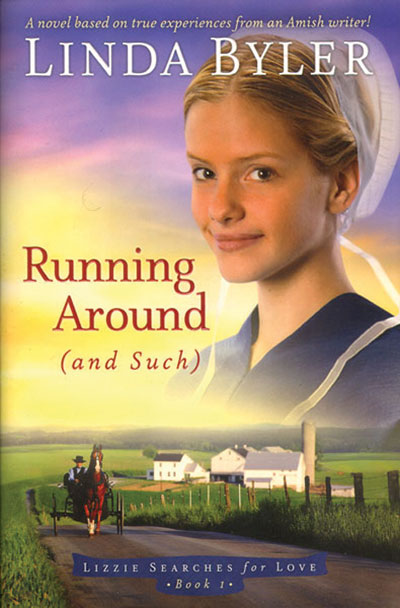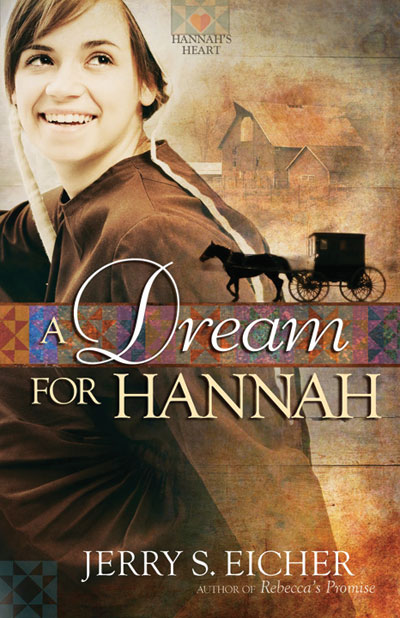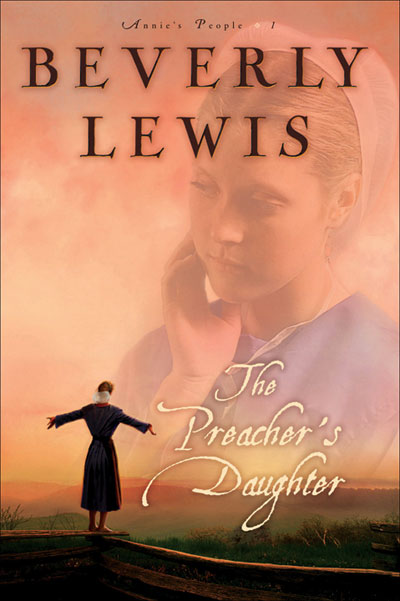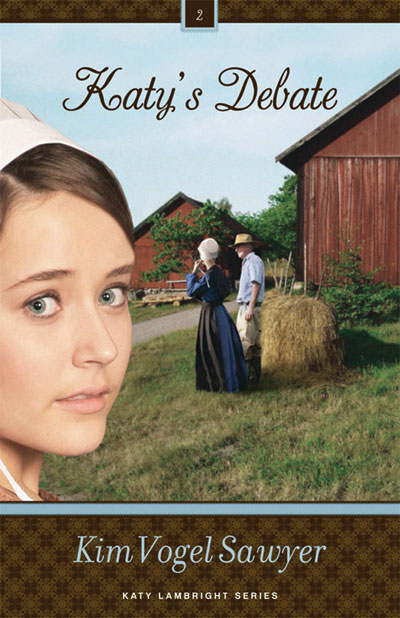A few years ago, when conducting research for my Ph.D. on Amish women in business, I visited a gift shop and noticed a rack of romance novels with pictures of Amish women on the cover. I asked the Amish business owner, “Do you sell a lot of these?”
“Yes,” she said. “The tourists like them.”
“Do Amish buy them?” I enquired.
“Well,” she said, “a lot of people read them.”
Later, an Amish grandfather admitted to me, “We would have some of these books in our homes.”
The genre is called “bonnet fiction,” described by one blogger as “Harlequin meets Little House on the Prairie, except Christian. All sanitized so as not to possibly offend any ‘weaker brethren’ and/or the ‘church lady.’ ”
A lot of people read bonnet fiction. Three bonnet-romance writers—Beverly Lewis, Wanda Brunstetter and Cindy Woodsmall—are New York Times best-selling authors. Ten of the top 25 Christian fiction books in 2009 were Amish romances, according to ChristianBooks.com, one of three major Christian book retailers.
And it is a rapidly growing sector. An April 27, 2009, a Time magazine article noted that “romance fiction, of which Amish-themed novels command a growing share, generates nearly $1.4 billion [US] in sales each year, and that number is rising.” According to a July 2009 ABC/Associated Press (AP) news story, although net sales for Christian retailers were down almost 11 percent in 2008, Amish fiction is “the undisputed industry leader.”
Who writes bonnet fiction?
Interestingly, the social location of most of the Amish romance writers is quite similar. While difficult to keep track of—since new writers join the genre each month—the authors are mainly white evangelical women of middle age, which is also the demographic for readers of Amish romance fiction. Most include some Christian credentials; some self-identify as a minister’s daughter (Lewis), minister’s wife (Brunstetter), or Sunday school teacher (Kim Vogel Sawyer). Others include a statement of Christian identity: “Gayle [Roper] is a convinced believer in Jesus as the Son of God and our Saviour.”
Jerry Eicher, a male author of Amish romance fiction who grew up in the Amish faith, is an exception. A part-time writer who runs a construction business in Virginia, Eicher’s website describes him as “an Amish insider.” His books include the “Adam’s County Trilogy” (known as the “Rebecca” series), set in southwestern Ohio, and the “Hannah” series, set in northern Indiana and Montana.
The two writers of bonnet fiction who have been working in the genre the longest—and who have stayed almost entirely within it—genuinely view their writing as evangelistic outreach and include on their websites self-conscious statements about writing to strengthen Christian faith.
“My greatest desire is to craft a truly inspirational story that spurs readers on to further heights of victorious Christian living and ministry for the glory of God,” writes Lewis.
Brunstetter—less well-known but almost as prolific as Lewis, with her “Daughters of Lancaster County” series, “Brides of Lancaster County” series, “Sisters of Holmes County” series, and two more recent Amish novels—writes: “My goal is to help readers of my books know God on a more personal level, and to offer them encouragement and hope during difficult times.”
Odd Amish depictions
All Amish romance authors write out of, and to, a particular evangelical Christian subculture. This can lead to some odd depictions of Amish faith. Amish protagonists often agonize about finding God’s will for their lives. In many, Jesus comes to them personally through sign or vision. In Woodsmall’s The Hope of Refuge, when Cara is stranded during a late-night lightning storm and flood, she is saved by a vision of Jesus. In Lewis’s series, “Amish Country Crossroads,” Rachel surrenders her will at the cross of Jesus.
According to reporter Ann Rodgers, who studied Amish fiction for a 2009 story in the Pittsburgh, Pa., Post Gazette, the biggest criticism noted by her sources was that characters in these novels think and talk too much like standard evangelicals, whose understanding of God’s will tends to be individualistic, rather than communal.
Regardless, virtually all of these writers appeal to a level of authenticity to legitimize their depictions of Amish life, which may or may not be completely accurate.
Lewis’s book, The Shunning, which she says was based loosely on her grandmother, was widely criticized for its inaccurate depiction of shunning. Of her Plain heritage, Lewis says that her maternal grandmother, Ada Ranck Buckwalter, was raised “horse-and-buggy Mennonite, which is just a step away from Amish,” and that she “left her Old Order Mennonite upbringing to marry a Bible college student.”
Similarly, Brunstetter reports on her website, “Ever since I married my husband, who grew up in a Mennonite church in Pennsylvania, I have had an interest in the Plain people. Four of my sister-in-laws [sic] are Mennonite, and I now have several Mennonite and Amish friends, as well.”
To be fair, many of these writers do try, in fact, to get their facts right in relation to the Amish characters they are depicting. Moreover, as Lewis once pointed out in conversation about the subplot of her series, “The Courtship of Nellie Fisher,” which includes the unlikely scenario of an Amish family giving their new baby to an infertile Amish couple, what could happen—and thus make a good story—is different from what has or has not actually happened in an Amish community.
Authenticity in the genre
Were we to look for genuine authenticity, however, we could turn to the works of Linda Byler of Franklin County, Pa., an Old Order Amish writer. An outspoken scribe for the weekly Amish newspaper, Die Botschaft, Byler turned to writing after the bankruptcy of her husband’s business. Facing huge debt, she put to use her most marketable skill, writing. “I couldn’t make the kind of money we needed cleaning houses,” she said. Byler decided to write about her growing-up years, “because I always liked the Laura Ingalls [Wilder] books.”
Her first book, Lizzie, was published in 2003. Byler has authored and self-published seven books in her “Buggy Spoke” series, loosely based on her childhood from age five to her early married life.
Byler still composes by hand, writing thoughts in pencil in composition books. Her prose is candid, humorous and true to her life as an Old Order Amish woman in more isolated Pennsylvania communities—although not without some internal censoring. She told a public gathering of the Lancaster Mennonite Historical Society that she writes “with an Amish bishop sitting on my shoulder” as her guide, adding, “It’s a bit unhandy.”
Interestingly, Byler’s writing may challenge some of the stereotypical, better-behaved Amish heroines that populate the books of other Amish romance writers and that readers may have been conditioned to expect.
As one blogger wrote: “I finished [Running Around (And Such) published by Good Books] last night. Thoroughly enjoyed a view of a very different Amish main character. Lizzie is 14 to 16 through this book and likes things in a most un-Amish way—food, going fast in the buggy, etc. She doesn’t like being overweight, most chores, babies, sewing and so on.”
Another blogger described Byler’s book as “fun and quirky. It does not portray the Amish as just pure goody-goods. Lizzie is young, hard-headed and totally different than most girls portrayed in Amish-based books. I look forward to reading what becomes of her.”
Standard bonnet fiction plotlines
That the actual character in an Amish memoir is seen as so different from standard portrayals of Amish protagonists suggests some of the stereotypic and exaggerated themes in much Amish romance fiction. Plotlines may include a preoccupation with personal salvation or heartfelt piety (often hidden) of the Amish heroine, which, if known, could create problems for her in the more staid Amish community. But in some plots this actually leads to a softening of the stern bishop’s heart.
In some books—Lewis’s “Annie’s People” series and Woodsmall’s “Sisters of the Quilt” series, for example—this tension is resolved by having the main character be helped by, or marry, a conservative Mennonite, whose faith is portrayed as more evangelically minded than that of the Amish.
Also in keeping with readers’ expectations, farming is the main livelihood for the Amish in most books’ peaceful rural settings, although that does not reflect current Amish reality in many of North America’s biggest settlements.
Action in many Amish romances revolves around four main themes, which, although they may occur in actual Amish life, are far less common than the novels would lead readers to believe:
- Outsiders becoming Amish. This is an extremely rare phenomenon, according to researcher Stephen Scott of the Young Center for Anabaptist and Pietist Studies at Elizabethtown College, Pa. Serious impediments, such as learning the Pennsylvania German dialect and giving up technology, are glossed over in these stories by the outsider’s love for an Amish protagonist or attraction to the bucolic rural life.
- Tragic accidents. These can be buggy accidents (A Merry Heart by Brunstetter and The Crossing by Lewis), fires (Forgiven by Shelley Shepard Gray), or accidental drowning (The Parting by Lewis), to name a few. Fathers, husbands and boyfriends often die tragically; their widows, fiancées or girlfriends are always young, beautiful and certain they can never find love again. Abandonment also occurs in these books, in which case the cheating spouse ultimately dies tragically, in order to sidestep the problem of divorce for the remaining spouse.
- Adoption. This often happens in secret and is revealed later in life. In Lewis’s The Shunning, a baby is adopted and raised by an Amish couple; as an adult who leaves the community, she comes to understand why she “never felt Amish,” and “always loved fancy things.” In Bishop’s Daughter and Storekeeper’s Daughter, both by Brunstetter, a kidnapped Amish baby is inextricably drawn back to the Amish community as an adult and discovers his true roots.
- The excesses of Amish rumspringe—the indiscretions during the Amish adolescent “running-around” period. In Lewis’s “Abram’s Daughters” series, not one but two characters have rumspringes in which they get pregnant by “English” boyfriends, hide their condition from everyone in the family, secretly give birth out of wedlock, and have the babies adopted by other Amish families. In Marta Perry’s Anna’s Return, the protagonist returns with a baby born out of wedlock during her rumspringe, which is almost unheard of among the Amish, since unwed parents usually marry.
These exaggerated plotlines lend dramatic tension to what are essentially G-rated romances, often marketed with the word “wholesome.” Last year, an ABC news article compared bonnet fiction to Victorian novels, in that just a brief moment of holding hands can mean ecstasy or unleash a flood of inner turmoil.
One blogger described the genre this way: “As far as romance novels go, you’re likely to get more sparks by rubbing two Amish quilts together. The novels feature chaste love, family values and biblical virtue with a decidedly Protestant mind frame. . . . These novels aren’t working out a character’s sexual identity, marital infidelities or teenage ‘sexting’ and binge drinking. I get that, I totally do; and if I can’t live the agrarian life, reading about it is the next best thing.”
Chasing the bonnet
To this subject of bonnet fiction I bring my own disciplinary bias. Trained as an American studies scholar and analyst of contemporary pop culture, I understand that this genre is important as a field of study because of its very popularity. The question I ask of bonnet fiction novels is not, “Are these great works of fiction?” Rather, I question, “Why are they popular and what can we learn from these works?”
The popularity of Amish romance writing among women corresponds with the reader-response research described by Janet Radway in her book, Reading the Romance: Women, Patriarchy and Popular Literature. Radway conducted interviews in a midwestern town with readers of Harlequin romances. She found that these women read for escape, for education about places that are foreign to them, and for pleasure.
As in Radway’s research, three out of four Christian fiction readers are women, according to research published in an AP/ABC news article last year, and they read for many of the same reasons that Radway articulated. Bonnet fiction, according to the article, is “a surprise hit with evangelical women attracted by a simpler time, curiosity about cloistered communities, and admiration for the strong, traditional faith of the Amish.”
A recent blog, typical of many, articulates the appeal of bonnet fiction: “This is an easy read that goes really fast and is very educational about other cultures. It does not have a complicated plot, nor does it go on ad nauseum in regards to details, etc. It is relaxing and a very enjoyable book. Left me with a happy feeling.”
According to Barbara Scott, senior acquisitions editor for fiction at Abingdon Press, an imprint of the United Methodist Publishing House, “Romance in any form dominates sales, and since ‘bonnet fiction’ by its nature is a clean read, it remains quite popular in Christian markets.”
Finally, the question of what accounts for the premise and popularity of Amish fiction needs to take into account what I call “tourism of the imagination.” Last year, Woodsmall described the appeal of bonnet fiction to readers: “[The books] are rooted in faith, family and community.”
Amish romance writers capitalize on these positive values associated with the Amish and with readers’ desire to visit Amish country, at least virtually, if not in actual fact.
In a variety of ways, bonnet fiction writers seek to capitalize on Amish “tourism of the imagination” and on nostalgia for a simpler bygone way of life. Websites of Marta Perry and Lewis include Pennsylvania Dutch recipes, Woodsmall’s website hosts a quilt auction, and Suzanne Woods Fisher has a weekly radio program, Amish Wisdom.
In March, Publisher’s Weekly printed an article, “Christian fiction editors talk trends: Bonnets multiply; goodbye, chick lit.” In reference to Christian Booksellers of America (CBA), the largest Christian book retailer, an editor from Zondervan noted that “35 percent of the February CBA list was bonnet fiction [and] I don’t see the market slowing down soon.”
Not if Christian authors like Beth Wiseman, Kathleen Fuller, Barbara Cameron and Amy Clipston have anything to do about it. Their joint AmishHearts.com website notes that between the four of them they will release some 20 Amish romance novels within the next two years.
And Beth Wiseman is forthright on her website about her desire to continue chasing the bonnet’s pot of gold as well: “The success of the Amish sub-genre suggests that I will be writing them for a long time.”
Beth E. Graybill lives in Lancaster, Pa., and attends Community Mennonite Church there. She earned a Ph.D. in American studies from the University of Maryland in 2009. She was director of the Lancaster Mennonite Historical Society from 2005-10 and is the former chair of the historical committee of Mennonite Church U.S.A. Originally published in a longer form by the Center for Mennonite Writing (www.mennonitewriting.org); the centre is sponsored by the Goshen (Ind.) College English Department.
See also “What’s really under the bonnet?”
For discussion
1. How many bonnet fiction books are in your church library? Who enjoys this type of book? Do you agree with Beth Graybill that women read this type of fiction “for escape, for education about places that are foreign to them, and for pleasure”? How much Christian fiction should be in our church libraries?
2. Amish-based fiction seems to be a growing trend. What other types of fiction are fashionable now or have gone out of fashion? Why might bonnet fiction be more popular today than 20 years ago? If some women read Amish novels, what do other people choose for an easy read?
3. Graybill suggests that not all writers paint a realistic picture of the Amish way of life. Does it matter if the characters do not think or behave like typical Amish? How do you think the Amish view these books?
4. Some of the writers of bonnet fiction hope that they are fostering faith in their readers. How much influence do books have on our lives? Should we encourage each other to read only wholesome books? Is reading for escape a good use of time?













Leave a Reply
You must be logged in to post a comment.